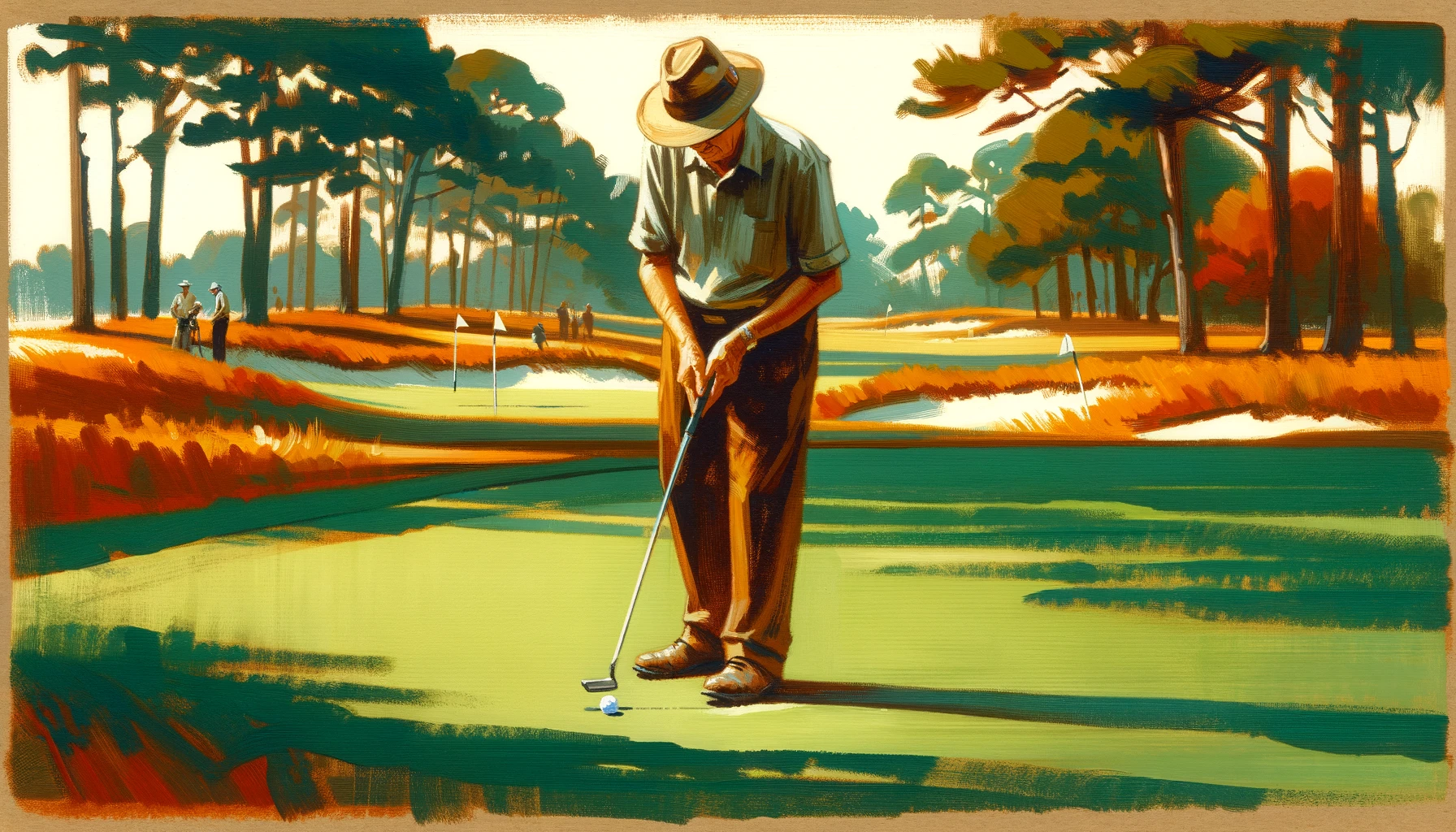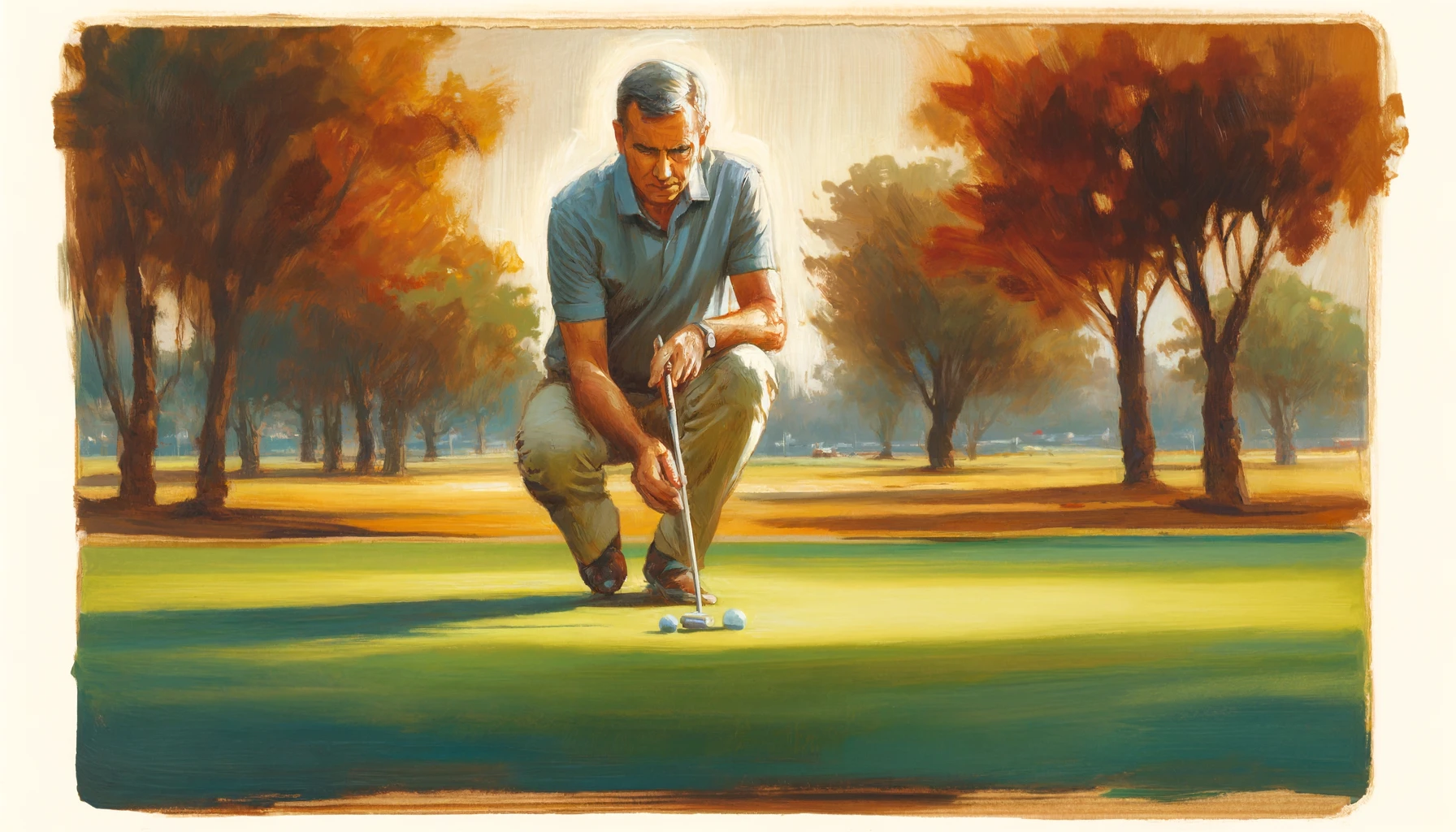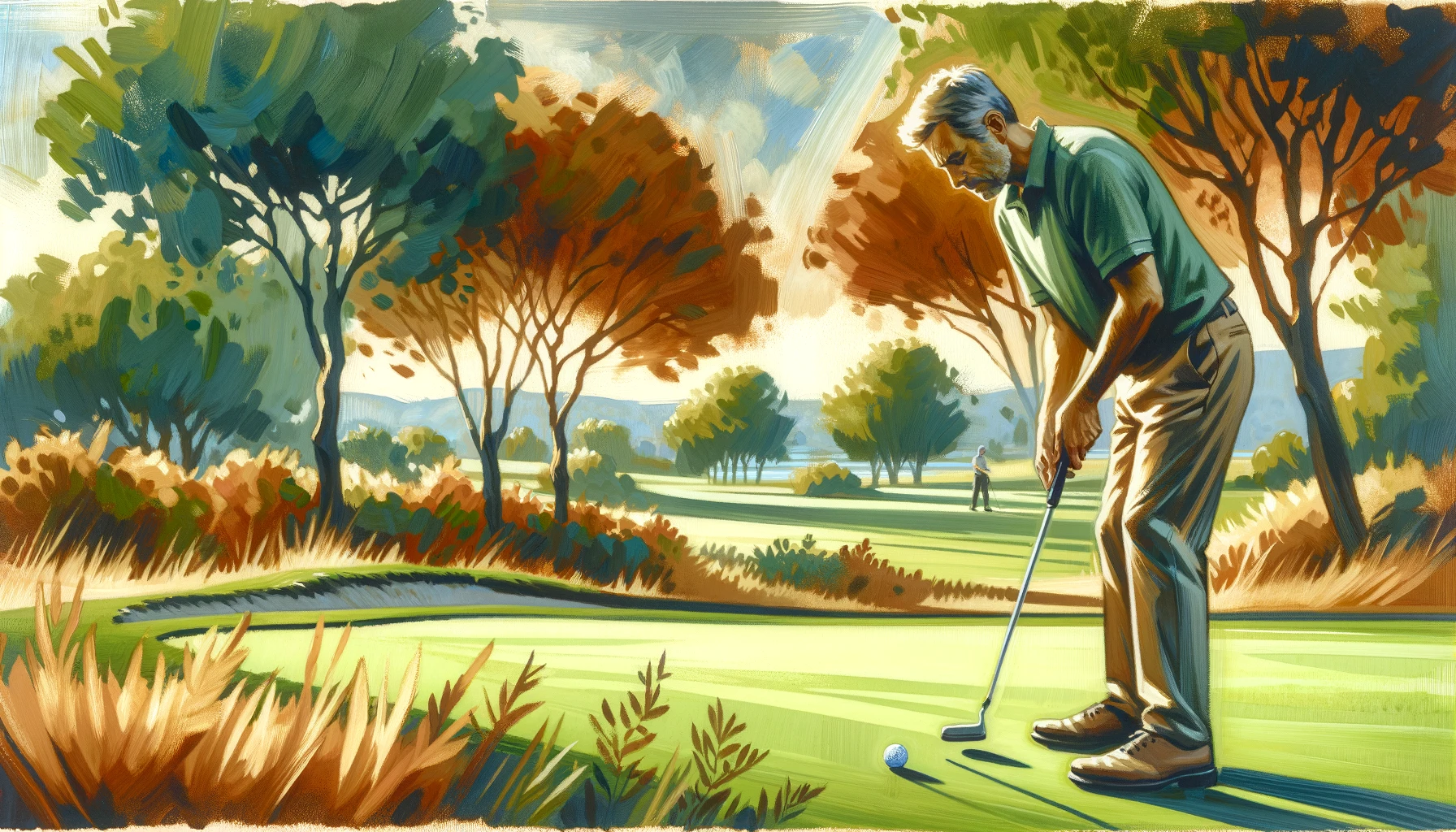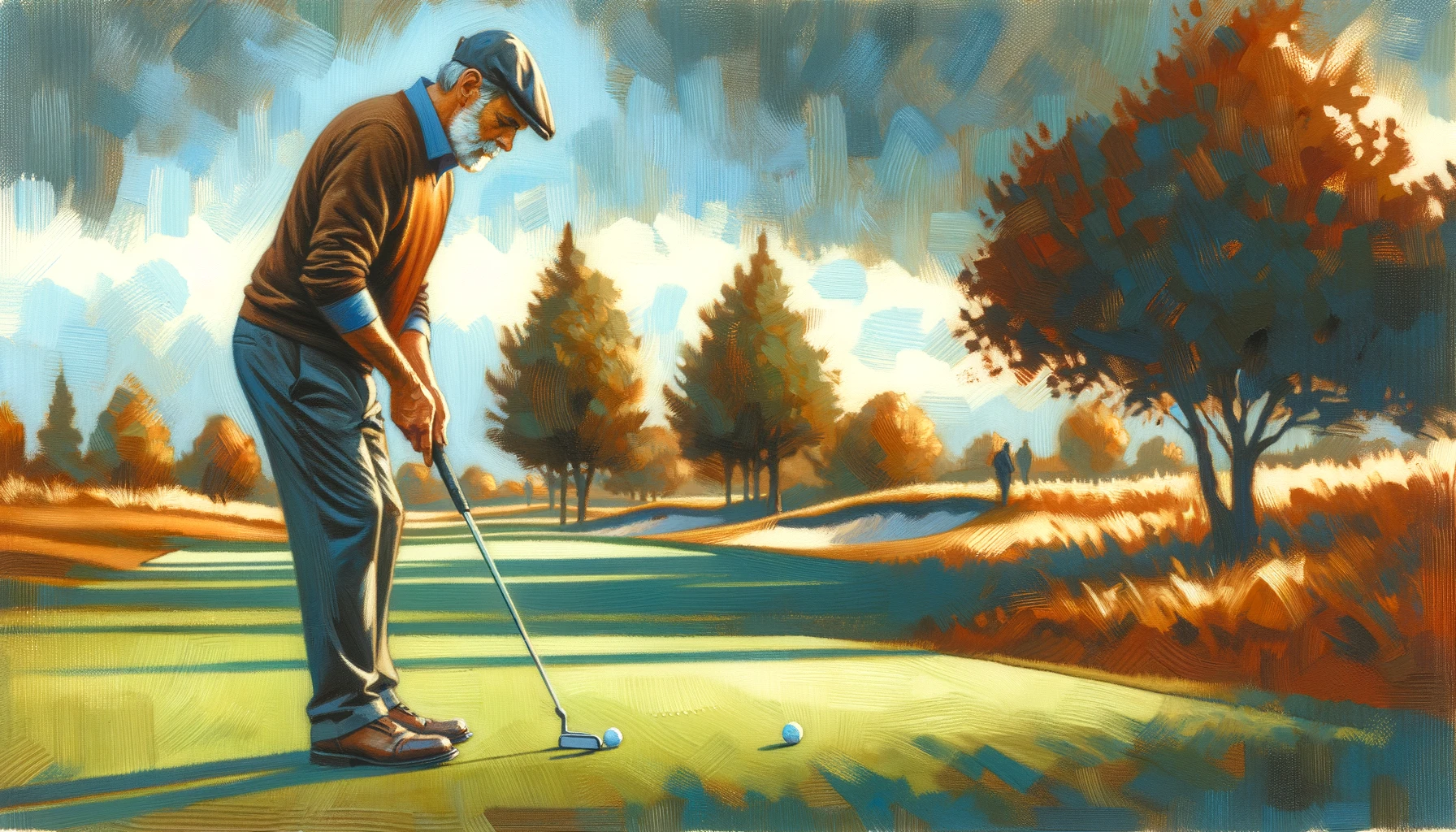Arc Putting Stroke Guide: Improve Your Green Performance
Struggling to lower your scores on the green? Mastering the arc putting stroke could be your key to success. This concise guide dives into practical tips and crucial adjustments that can transform your putting game from frustrating to phenomenal. Discover actionable strategies to ensure every putt is powerful and precise, and check out our FAQ section if you're short on time. Let's streamline your putting technique and make those crucial shots count!
Have you ever stood on the green, puzzled and frustrated, watching your putts veer off path, despite feeling like you did everything right? You're not alone. The arc putting stroke, lauded for its effectiveness in building a reliable and repeatable putting technique, often remains shrouded in mystery for many amateur golfers. The challenge isn't just in understanding the stroke—it's in mastering it to the point where it feels natural and dependable, especially under pressure.
That nagging feeling of uncertainty when you line up your putt can be infuriating. I've been there—overthinking each movement, second-guessing my alignment, and consequently, losing my natural flow. It's a common roadblock that can throw even the most seasoned golfers off their game. Questions linger about the right grip, the perfect arc width, and how to consistently drive the ball into the hole with precision.
The solution lies in demystifying the arc putting stroke. In this article, I’ll share not just the technicalities but also personal anecdotes and easy-to-implement strategies that have transformed my game. From understanding the fundamental mechanics to exploring advanced techniques, we'll dive deep into making your arc stroke not just effective, but a powerful weapon in your golfing arsenal. Join me as we unlock the secrets to precision and power on the green, ensuring your putts are nothing short of spectacular.
 A seasoned golfer enhances his game on a tranquil course.
A seasoned golfer enhances his game on a tranquil course.Arc Putting Stroke: Secrets to Perfect Your Putts
Growing up near a local golf course, I was always fascinated by the game, but putting was my Achilles' heel. No matter how hard I practiced, I couldn't find consistency with my putts, leading to frustration and stalled progress in lowering my scores.
I spent years experimenting with different putting techniques, reading countless articles, and watching tutorials. Despite my efforts, my improvement was marginal, and my passion for golf began to wane as my putting woes overshadowed my love for the game.
Everything changed when I attended a golf clinic led by a renowned putting coach. He introduced me to the arc putting stroke, a technique that emphasized natural arm and shoulder movements. This was a stark contrast to the rigid, mechanical strokes I had been trying to perfect.
The coach provided a simple yet effective framework for mastering the arc putting stroke. It focused on alignment, grip pressure, and a consistent stroke path. I practiced diligently, using tools and drills he recommended to engrain the new movements into my muscle memory.
After months of practice, my putting transformed. I started to see a significant drop in my scores, and my confidence soared. The real turning point came during a local tournament, where my improved putting clinched my first amateur victory. This success not only reignited my passion for golf but also reshaped my approach to learning and improvement in all aspects of my life.
"Success in this game depends less on strength of body than strength of mind and character." - Arnold Palmer
What Are the Key Benefits of Using an Arc Putting Stroke?
Stepping onto the green, putter in hand, many golfers face the classic dilemma of how to putt effectively. After years of playing and exploring various putting techniques, I've settled into using an arc putting stroke, which transformed my putting game from mediocre to exceptional. Let me share why this method could be your game changer too.
First and foremost, the arc putting stroke mimics the natural motion of the arm and wrist. Unlike the straight-back-straight-through method, which requires strict control and often feels unnatural, the arc stroke aligns with the ergonomic movement of your joints, allowing for a smoother and more consistent stroke. This natural alignment helps reduce strain and enhances your ability to repeat the same motion effortlessly.
The primary benefit of adopting an arc stroke is its impact on accuracy and control. When I first switched to this style, I noticed how it improved my ball contact, giving me a cleaner roll and better distance control. It was during a particularly tense buddy championship when the arc stroke's precision came to my rescue, helping me sink crucial putts from mid-range, something I struggled with before.
In addition, the arc stroke promotes better feedback from each shot. As you swing the putter in an arc, you can feel whether the putter face is open or closed throughout the stroke, which is critical for making adjustments on the fly. This feedback mechanism helped me during practice rounds to tweak my technique slightly with each stroke, gradually reducing my putts per round.
Another notable advantage is the adaptability of the arc putting stroke to different green conditions. Whether it's a fast, sloping green or a slower, flatter surface, the arc technique provides the versatility needed to adjust your power and path more intuitively. Last summer, while playing on dewy morning greens, this adaptability was evident as I adjusted my arc to accommodate the extra slickness, ensuring the ball rolled true to my aim.
To integrate this technique into your game, start by focusing on the key components:
- Putter Path: Ensure your putter moves inside to square to inside along an imagined curved line.
- Putter Face Control: Maintain awareness of the putter face orientation throughout the stroke.
- Body Alignment: Keep your eyes directly over the ball and your body lines parallel to the target path.
Here’s a quick bullet list to sum up the benefits:
- Natural Motion: Aligns with natural arm and wrist movements.
- Increased Accuracy: Provides a smoother stroke for better ball contact.
- Enhanced Feedback: Improves your ability to adjust based on the feel of each stroke.
- Adaptability: Versatile across various green conditions.
Implementing the arc putting stroke isn't just a technique change—it's a mindset shift. Once you start seeing the improvements in your putting, you’ll understand why so many seasoned golfers, including myself, swear by it.
 Perfecting the putting game amid nature's beauty.
Perfecting the putting game amid nature's beauty.How Can I Adjust My Stance for a Better Arc Putting Stroke?
Achieving a better arc putting stroke often starts with a critical and frequently overlooked aspect: your stance. It took me a while to appreciate how much stance affects putting performance. My journey to mastering the arc putting stroke included many trials and tweaks, and I want to share these insights to help transform your putting stance into a more effective foundation for your stroke.
When I first began focusing on improving my putting, I was amazed at how small adjustments in my stance could yield significant results. During a practice session, a fellow golfer suggested I make a slight change in my foot positioning. This small tweak was a game-changer, aligning my shoulders better with the intended putt line, which in turn, enhanced the natural arc of my stroke.
To adjust your stance effectively, consider these key aspects:
1. Foot Alignment: Your feet should be roughly shoulder-width apart, with the ball positioned slightly forward in your stance. This setup promotes a stable base and allows for a free-flowing stroke.
2. Shoulder Positioning: Align your shoulders parallel to your target line. Misalignment here can easily cause the stroke to deviate from its intended path.
3. Weight Distribution: Balance your weight evenly on both feet or lean slightly towards your target for more aggressive putts. This balance is crucial for maintaining control throughout the stroke.
Here’s a quick bullet list to help you visualize the adjustments:
- Feet shoulder-width apart, ball positioned forward
- Shoulders aligned with the target line
- Even weight distribution, slight forward lean for aggression
One memorable round, I was struggling with my putts, missing short distances that I usually made. Frustrated, I revisited these fundamentals mid-round, adjusting my stance slightly before each putt. The results were almost immediate. My putts began rolling smoothly into the hole, and my confidence soared.
In addition to these tips, here are two drills to help solidify your stance:
- Mirror Drill: Practice your stance in front of a full-length mirror. Check for shoulder alignment and ensure your eyes are directly over the ball.
- Chalk Line Drill: Use a chalk line to mark a straight path towards a practice hole. Practice putting along this line, focusing on maintaining your stance and shoulder alignment.
Adjusting your stance for a better arc putting stroke isn't just about physical positioning; it's about building a repeatable and confident approach to each putt. With these adjustments, you can enhance not only the mechanics but also the consistency of your putting stroke.
 A golfer's quest for the perfect putt unfolds on a scenic green.
A golfer's quest for the perfect putt unfolds on a scenic green.What Common Mistakes Should I Avoid in Arc Putting?
Mastering the arc putting stroke is like fine-tuning a musical instrument; it requires attention to detail and an awareness of the common pitfalls. I've had my share of struggles and learning experiences on the greens, and I'm here to help you sidestep some of the typical mistakes that can hinder your performance.
One of the most common errors I encountered when first adopting the arc putting stroke was inconsistent setup. Each putt felt different from the last, which was frustrating and confusing. It wasn't until a seasoned coach pointed out my erratic posture and grip that I realized consistency in setup is crucial. Here's what to watch out for:
1. Inconsistent Posture: Ensure that your stance and posture are the same for every putt. Changes in your setup can lead to significant variations in your stroke.
2. Poor Grip Pressure: Gripping the putter too tightly or too loosely affects the fluidity and accuracy of your stroke. Aim for a firm yet gentle grip.
3. Misaligned Shoulders: Your shoulders should be parallel to the intended line of the putt. Misalignment can cause the ball to start off on the wrong path.
Remembering these tips helped me significantly during a high-pressure round with my buddies. After adjusting my grip and ensuring my shoulders were properly aligned, I started making putts that had previously slipped away, boosting my confidence and my score.
Here’s a quick checklist to avoid these mistakes:
- Check your posture before each putt
- Maintain consistent grip pressure
- Ensure shoulders are parallel to the putt line
Another mistake to avoid is not accounting for the type of green you're playing on. The speed and slope of the green can dramatically affect the arc and speed of your putt. During a particularly challenging round on a fast, sloped green, I learned the hard way that failing to adjust my stroke speed and arc could lead to significant errors in judgment.
To improve your arc putting:
- Practice on different types of greens: Familiarize yourself with how your putts behave on various surfaces.
- Use a putting mat with speed variations: This can simulate different green conditions and help you adapt your stroke accordingly.
Avoiding these common mistakes can dramatically improve your arc putting. Each round, take a moment to assess and refine your technique. Over time, these adjustments will become second nature, and you'll see a marked improvement in your putting consistency and confidence.
 Unlocking the secrets to successful putting under the open sky.
Unlocking the secrets to successful putting under the open sky.Key Takeaways for Mastering the Arc Putting Stroke
To ensure you can put these insights into practice right away, here are the core actionable takeaways from our exploration of the arc putting stroke:
- Understand Your Stroke: It aligns with the natural movement of your arms and wrists, which means you can putt more comfortably and consistently.
- Consistent Setup: Establish a routine for your stance and grip to ensure each putt feels the same, which means you eliminate variability and increase reliability.
- Practice Regularly: Use drills like the Mirror Drill and Chalk Line Drill to reinforce your technique, which means your adjustments will stick and become second nature.
- Adjust for Conditions: Learn to adapt your stroke for different green speeds and slopes, which means you can handle any course you play on.
These straightforward steps will not only improve your putting but will enhance your overall confidence on the green. Now, imagine the satisfaction as your buddies watch in awe while you sink putts with ease and poise.
Are you ready to change your game for the better?
You're at the point of decision. You can either continue down the path of least resistance, the path you have already been traveling, or you can choose the road less traveled. The path of least resistance will probably result in you getting the same outcomes you've always received.
But if you want something different to happen, if you want to change the direction of your golf game, you're going to have to do something different. Make a new choice, and pursue your new outcome. Choose to invest time in mastering the arc putting stroke, and I promise, your future self will thank you for the dramatically improved scores and the newfound respect from your peers.
So, what will it be? Will you take the step towards mastering this essential skill, or will you watch from the sidelines as others make the leap? The decision is yours.
FAQ About Arc Putting Stroke
What is an arc putting stroke in golf?
What is an arc putting stroke in golf?
The arc putting stroke is a technique where the putter moves in a slight, natural arc during the backswing and forward swing, as opposed to moving straight back and through. This method helps many golfers achieve more consistent and natural putts.
You're probably thinking you need perfect form to use an arc putting stroke, right?
You're probably thinking you need perfect form to use an arc putting stroke, right?
Well, while form is important, the arc putting stroke is actually very forgiving. It works with your body's natural movements, so even if your form isn't perfect, you can still achieve great results.
What are the benefits of using an arc putting stroke?
What are the benefits of using an arc putting stroke?
Using an arc putting stroke promotes a more natural movement, aligning with the natural rotation of your arms and shoulders. This can lead to improved accuracy and consistency, especially on longer putts where precision is crucial.
You're probably thinking an arc putting stroke won't work on faster greens, right?
You're probably thinking an arc putting stroke won't work on faster greens, right?
Well, actually, the arc putting stroke can be adjusted for any green speed. It's all about adapting the arc and the speed of your stroke to match the green conditions, allowing for greater control and precision.
How does the arc putting stroke differ from a straight-back, straight-through stroke?
How does the arc putting stroke differ from a straight-back, straight-through stroke?
In the arc putting stroke, the putter head moves along a curved path, staying aligned with the movement of the arms and shoulders. This contrasts with the straight-back, straight-through stroke, where the putter head moves directly along the target line with minimal lateral motion.
You're probably thinking you need a special putter for an arc putting stroke, right?
You're probably thinking you need a special putter for an arc putting stroke, right?
Well, while certain putters may enhance the feel of an arc stroke, most standard putters can be used effectively with this technique. It's more about how you use the putter than the putter itself.
Is the arc putting stroke suitable for all golfers?
Is the arc putting stroke suitable for all golfers?
While many golfers benefit from the natural rhythm and flow of an arc putting stroke, it's not universal. It's important to try different styles to see which best complements your individual putting style and physical mechanics.
You're probably thinking learning an arc putting stroke is time-consuming, right?
You're probably thinking learning an arc putting stroke is time-consuming, right?
Well, the truth is, while it does require practice, the improvements you'll see in your consistency and confidence on the greens can save you strokes and reduce your scores much faster than you might expect.
How can I improve my arc putting stroke?
How can I improve my arc putting stroke?
Practice is key to mastering the arc putting stroke. Focus on maintaining a consistent stroke path and speed. Use drills and training aids that reinforce the arc movement, helping you develop muscle memory and improve your overall putting technique.
You're probably thinking that an arc putting stroke is only for professional golfers, right?
You're probably thinking that an arc putting stroke is only for professional golfers, right?
Well, actually, golfers at all levels can benefit from using an arc putting stroke. It's about finding a comfortable and consistent stroke that works for you, regardless of your skill level.
















